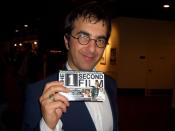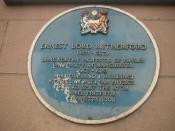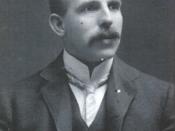Rutherford, Ernest, 1st Baron Rutherford of Nelson and Cambridge (1871-1937), British physicist, who became a Nobel laureate for his pioneering work in nuclear physics and for his theory of the structure of the atom.
Rutherford was one of the first and most important researchers in nuclear physics. Soon after the discovery of radioactivity in 1896 by the French physicist Antoine Henri Becquerel, Rutherford identified the three main components of radiation and named them alpha, beta, and gamma rays. He also showed that alpha particles are helium nuclei. His study of radiation led to his formulation of a theory of atomic structure, which was the first to describe the atom as a dense nucleus about which electrons circulate in orbits.
In 1909, now at the University of Manchester, Rutherford conducted his famous experiment, which would prove the J.J. Thomson Model of the Atom incorrect. Thomson theorized that since electrons and protons have electrostatic forces between them.
(The negatively charged electrons attract the positively charged protons, while the electrons repel other electrons, and protons repel other protons). He believed that the electrons and protons were uniformly distributed throughout the atom to minimize electrostatic repulsions. Rutherford set up an experiment that would have an alpha rays directed at a thin-gold target. He expected that the positively chargedparticles would just go straight through the gold target since the positively charged particles (protons) were distributed equally through the atom. Rutherford was bombarding a thin gold foil with alpha particles when he noticed that although almost all of them went through the gold, one in eight thousand would "bounce" (i.e. scatter) back. The amazed Rutherford commented that it was "as if you fired a 15-inch naval shell at a piece of tissue paper and the shell came right back and hit you." From this simple observation,


